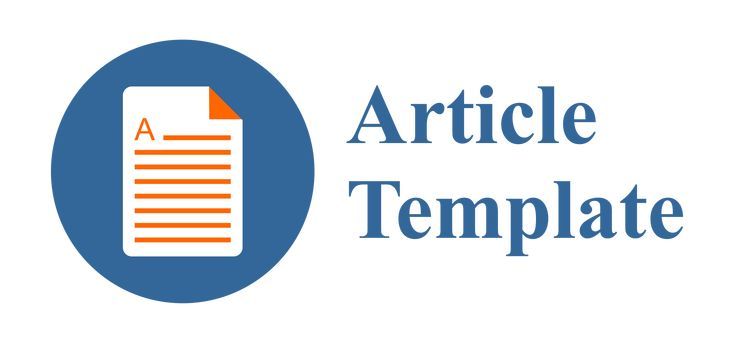Evaluasi Pembayaran Keuangan Siswa berdasarkan Penghasilan Wali Siswa menggunakan Metode Clustering K-Means
DOI:
https://doi.org/10.29408/edumatic.v6i2.6395Keywords:
cost of education, payment evaluation, clustering method, k-means algorithm, elbow methodAbstract
One of the problems that often occurs in school administration is the late payment of tuition fees. Therefore, it is necessary to evaluate the education payment process so that in the future the payment process can run in an orderly and disciplined manner. This study aims to create a cluster model for grouping student administration payments. This type of research is quantitative using the K-Means Clustering method to classify payment data based on 2 variables, namely the time of payment and the income of students' guardians carried out in private elementary schools in Semarang. The data used in this study is payment data for the 2019/2020 academic year, which totals 1,933 records, covering transactions from 419 students. Determining the number of clusters is calculated using the elbow method, the best clusters obtained from the data used are 3 clusters, namely clusters 0, 1 and 2. Our findings show that cluster 2 has the largest percentage of early monthly administration payments, namely 52.5%, the percentage is on time the highest was in cluster 1, namely 74.8%, and the highest percentage of late payments was in cluster 0, namely 28.6%. The results of the analysis show that the main factor for late payments is not the guardian's income but other external factors, as evidenced by the highest percentage of late payments in cluster 0, where the average income of student guardians is >= 10,000,000.
References
Abdullah, R. W., Kusrini, K., & Luthfii, E. T. (2019). Prediksi Keterlambatan Pembayaran Spp Sekolah Dengan Metode K-Nearest Neighbor (Studi Kasus Smk Al-Islam Surakarta). Informasi Interaktif, 4(3), 160-164.
Hossain, M. Z., Akhtar, M. N., Ahmad, R. B., & Rahman, M. (2019). A dynamic K-means clustering for data mining. Indonesian Journal of Electrical Engineering and Computer Science, 13(2), 521–526. https://doi.org/10.11591/ijeecs.v13.i2.pp521-526
Jothi, R., Mohanty, S. K., & Ojha, A. (2019). DK-means: a deterministic K-means clustering algorithm for gene expression analysis. Pattern Analysis and Applications, 22(2), 649–667. https://doi.org/10.1007/s10044-017-0673-0
Li, L., Wang, J., & Li, X. (2020). Efficiency Analysis of Machine Learning Intelligent Investment Based on K-Means Algorithm. IEEE Access, 8, 147463–147470. https://doi.org/10.1109/ACCESS.2020.3011366
Marisa, F., Ahmad, S. S. S., Yusof, Z. I. M., Akhriza, T. M., Purnomowati, W., & Pandey, R. K. (2021). The Analyze of Relationship between Revenue and Customer Payment Methods in Small Medium Enterprise Based on Clustering K-Means. In Journal of Physics: Conference Series, 1908(1), 1-9. IOP Publishing. https://doi.org/10.1088/1742-6596/1908/1/012021
Marutho, D., Hendra Handaka, S., Wijaya, E., & Muljono. (2018). The Determination of Cluster Number at k-Mean Using Elbow Method and Purity Evaluation on Headline News. Proceedings - 2018 International Seminar on Application for Technology of Information and Communication: Creative Technology for Human Life, ISemantic 2018, 533–538. https://doi.org/10.1109/ISEMANTIC.2018.8549751
Nainggolan, R., Perangin-Angin, R., Simarmata, E., & Tarigan, A. F. (2019). Improved the Performance of the K-Means Cluster Using the Sum of Squared Error (SSE) optimized by using the Elbow Method. Journal of Physics: Conference Series, 1361(1). https://doi.org/10.1088/1742-6596/1361/1/012015
Nurzahputra, A., Muslim, M. A., & Khusniati, M. (2017). Penerapan Algoritma K-Means Untuk Clustering Penilaian Dosen Berdasarkan Indeks Kepuasan Mahasiswa. Techno.Com, 16(1), 17–24. https://doi.org/10.33633/tc.v16i1.1284
Prabowo, C., Nul, L., Cep, H., Rohmat, L., & Rizki, A. (2021). JURNAL DATA SCIENCE & INFORMATIKA ( JDSI ) Teknik Klasifikasi Pembayaran SPP Berdasarkan Tingkat Ketepatan Pembayaran. 1(1), 1–5.
Rodriguez, M. Z., Comin, C. H., Casanova, D., Bruno, O. M., Amancio, D. R., Costa, L. da F., & Rodrigues, F. A. (2019). Clustering algorithms: A comparative approach. In PLoS ONE. 14(1), 1-34. https://doi.org/10.1371/journal.pone.0210236
Sammouda, R., & El-Zaart, A. (2021). An optimized approach for prostate image segmentation using K-means clustering algorithm with elbow method. Computational Intelligence and Neuroscience, 2021, 1-13. https://doi.org/10.1155/2021/4553832
Sari, V., Firdausi, F., & Azhar, Y. (2020). Perbandingan Prediksi Kualitas Kopi Arabika dengan Menggunakan Algoritma SGD, Random Forest dan Naive Bayes. Edumatic: Jurnal Pendidikan Informatika, 4(2), 1–9. https://doi.org/10.29408/edumatic.v4i2.2202
Sinaga, K. P., & Yang, M. S. (2020). Unsupervised K-means clustering algorithm. IEEE Access, 8, 80716–80727. https://doi.org/10.1109/ACCESS.2020.2988796
Sujana, I. W. C. (2019). Fungsi dan Tujuan Pendidikan Indonesia. Adi Widya: Jurnal Pendidikan Dasar, 4(1), 29-39. https://doi.org/10.25078/aw.v4i1.927
Sukmadewanti, I., Arifudin, R., & Sugiharti, E. (2018). Use of K-Means Clustering and Analytical Methods Hierarchy Process in Determining the Type of MSME Financing in Semarang City. Scientific Journal of Informatics, 5(2), 148–158. https://doi.org/10.15294/sji.v5i2.16221
Syakur, M. A., Khotimah, B. K., Rochman, E. M. S., & Satoto, B. D. (2018). Integration K-Means Clustering Method and Elbow Method for Identification of the Best Customer Profile Cluster. IOP Conference Series: Materials Science and Engineering, 336(1), 1-6. https://doi.org/10.1088/1757-899X/336/1/012017
Toma, G. A. (2021). Performance analysis of state of art clustering approaches in data mining. Int J Inf Technol (IJIT), 7(3), 40-44.
Umargono, E., Suseno, J. E., & Gunawan, S. V. (2020). K-means clustering optimization using the elbow method and early centroid determination based on mean and median formula. In The 2nd International Seminar on Science and Technology (ISSTEC 2019) (pp. 121-129). Atlantis Press. https://doi.org/10.2991/assehr.k.201010.019
Uska, M., Wirasasmita, R., Usuluddin, U., & Arianti, B. (2020). Evaluation of Rapidminer-Aplication in Data Mining Learning using PeRSIVA Model. Edumatic: Jurnal Pendidikan Informatika, 4(2), 164–171. https://doi.org/10.29408/edumatic.v4i2.2688
Yang, X., Wu, S., Xia, H., Li, Y., & Li, X. (2020). Campus Economic Analysis Based on K-Means Clustering and Hotspot Mining. Review of Educational Theory, 3(2), 42-50. https://doi.org/10.30564/ret.v3i2.1837
Yuan, C., & Yang, H. (2019). Research on K-Value Selection Method of K-Means Clustering Algorithm. J, 2(2), 226–235. https://doi.org/10.3390/j2020016
Zuhroh, I., Rofik, M., & Echchabi, A. (2021). Banking stock price movement and macroeconomic indicators: k-means clustering approach. Cogent Business and Management, 8(1), 1-10. https://doi.org/10.1080/23311975.2021.1980247
Downloads
Published
How to Cite
Issue
Section
License
All articles in this journal are the sole responsibility of the authors. Edumatic: Jurnal Pendidikan Informatika can be accessed free of charge, in accordance with the Creative Commons license used.

This work is licensed under a Lisensi a Creative Commons Attribution-ShareAlike 4.0 International License.




